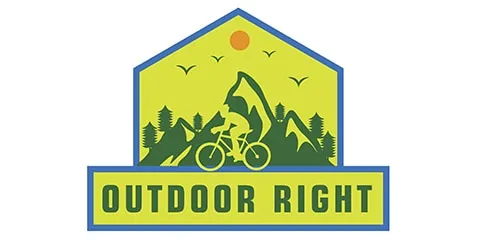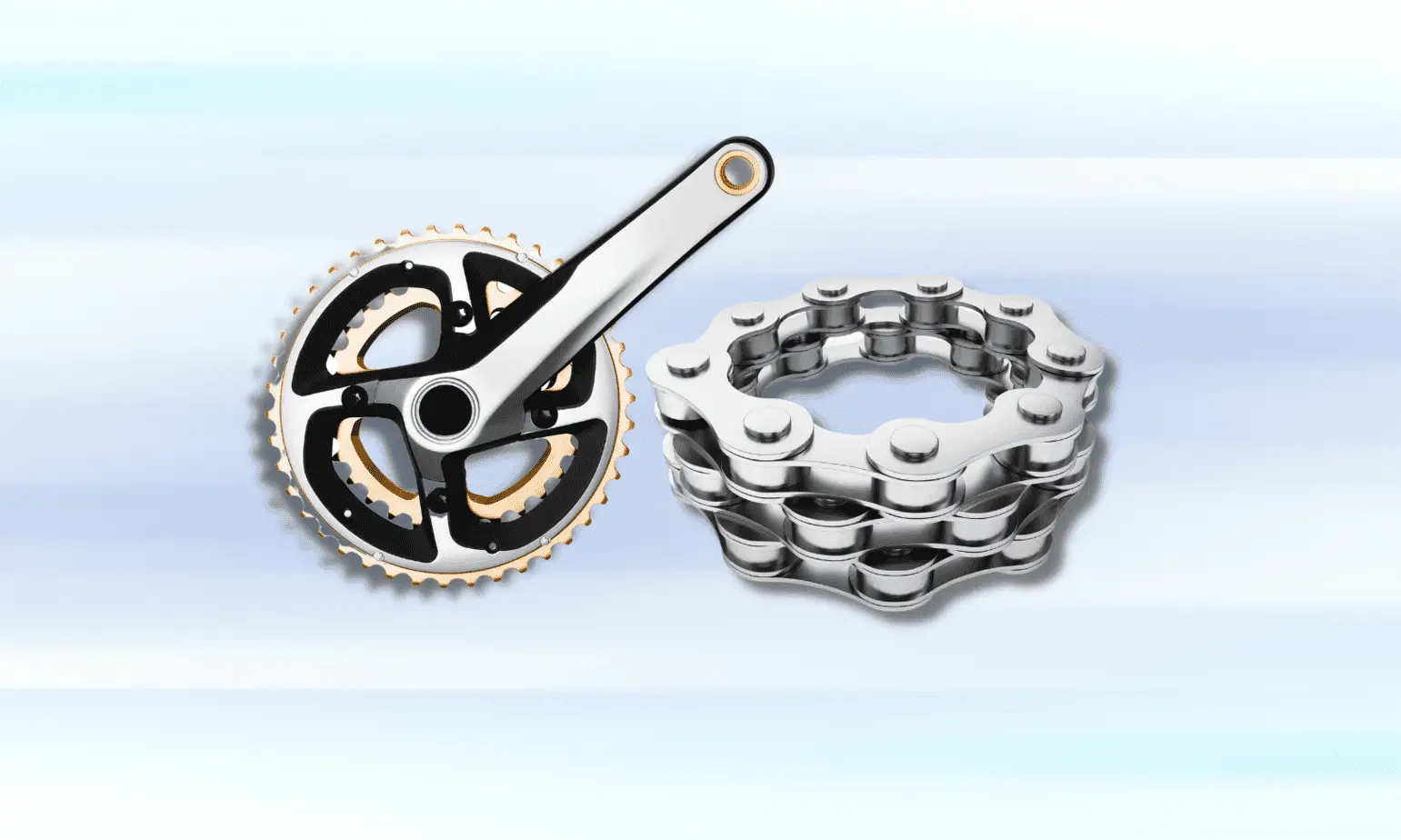It’s difficult to know at a glance whether or not a bike chain is worn out and needs to be replaced, which begs the question of how long a 12-speed chain should last.
A 12-speed bike chain should last at least 750 miles of singletrack riding, but a high-quality chain that is properly maintained can last over 1,000 miles before needing to be replaced. The variability in chain longevity results from the overall quality of the chain, the rider’s cleaning and lubing habits, and the stress placed on the chain by rider’s shifting habits.
Read further for an in-depth breakdown of these factors, their impact on chain longevity, and advice on how to maximum the lifespan of your chain.
Table of Contents
How Do I Know When to Replace My Chain?
To the surprise of many casual riders, bike chains don’t last forever. They wear out, require maintenance, and eventually require replacement.
It’s important to understand the condition of your chain and when it needs to be replaced. Neglecting your chain could result in a broken chain mid-ride, and you don’t want to be caught without a chain when you are miles into a trail ride.
The quickest way to check your chain wear is to pull the chain away from the chain ring and look for a gap between the chain and chainring. If you see a gap, it may be worth considering replacing your chain. However, this depends on a properly tensioned chain to begin with, so we can rely on more definitive methods of checking chain wear.
Chain wear can be measured with a standard ruler. Line up the chain rivets with the ruler. 12 rivets of chain should measure 12 inches, and if the measurement does not reflect this, your chain is due for replacement.
The final and most reliable way to check for chain wear is using a Chain Wear Indicator. This is an easy-to-use tool that can provide a quick, accurate measurement for your chain wear, so you know exactly when it’s time for a replacement. Using a chain wear indicator is our recommended method for reviewing your chain wear.
- Chain Wear Indicator
- The tool works on any 5 to 12-speed derailleur chain (including SRAM AXS) and is...
- Takes the guesswork out of determining when a chain is worn out
- Accurately measures wear on all 1/2" pitch bicycle chains
- Compatible with all 5-to-12 speed chains
Now that we know how to tell when our chain needs to be replaced, let’s discuss how to prolong our chain as much as possible.
Overall Chain Quality
Purchasing a new chain is not the most exciting upgrade, so you may be temped to select an inexpensive option. However, a quality chain goes a long way in terms of performance and longevity.
So, how much should you spend? Chain prices can range anywhere from $5 to $100, and of course we all want the best performance for the lowest price. Your best bet is to ask the bike mechanic at your local bike shop which one you should purchase.
A bike shop quality chain is essential (skip the Walmart chains) for quality and durability, and your local mechanic will know what option is best for you. They will surely help you find the most durable chain at an affordable price that suits you and your riding style well. Therefore, it’s important to support your local shop and build a relationship with the knowledgeable mechanics there.
Keep a Clean Chain
It is very important to keep your chain as clean as possible. In fact, you should keep all your drivetrain components as clean as possible. Simply put, everything works better when clean, and this is also true for your chain.
Riding in muddy and dirty conditions will cause dirt and grime to build up, which inhibits smooth motion and increases the stresses placed on the chain. Because of this, it’s a good practice to clean your bike after a dirty ride, especially the chain and drivetrain components. It’s easiest to get your bike clean right after the ride, rather than letting the mud sit and cake onto the bike.
It’s also important to ensure you have a clean chain prior to the next step in chain maintenance: lubing your chain.
Lube Your Chain
After cleaning and degreasing your chain, you must lubricate it effectively. The first step is to pick out a quality chain lube. Everyone has their preferences, and over time you will find your own preference, but I would recommend T9 dry lube. It goes on easily and clean, lasts a long time, and is effective at not collecting grime and grease. It even holds up well in rain and wet conditions.
- Wet, dry or in dirt, serious cyclists rely on one product to clean, lubricate...
- Lubricate your bike chain, waterproof cables, and prevent rust with our...
- Loosens rusty and corroded parts and is safe on paints, any metal surfaces,...
- T-9 flushes out dirt and old lubricants, displaces moisture, and penetrates...
- Dries to a thin, waxy film that clings to metal for months
Now that you have a quality chain lube, start by degreasing your chain with a speed degreaser and wiping it off with a rag. Allow the chain to sit for a minute to ensure the degreaser has evaporated.
- Finish Line's most powerful and popular degreaser
- A dry-style degreaser which cleans and strips everything down to bare metal and...
- Perfect for decontaminating disc brakes
- Turbo sprayer uses mechanical agitation to help quickly remove contaminants
- No brushing or water rinsing required
Apply lube to the chain with one hand and backpedal the crank with your other hand until you have fully coated the chain. At this point, continue to backpedal to allow the lube to continue to spread and work its way into the rivets and links of the chain.
After 15 seconds of backpedaling, lightly hold a rag to the chain and continue to backpedal. This removes any excess lube from the chain. The excess lube has no performance benefit but will collect dirt and grime if left on the chain, so it is critical to wipe off the excess.
It is a good practice to clean and lubricate your chain every 2 to 4 rides. If your bike stayed cleaned on your last ride, you can probably skip lubricating it prior to the next. However, after muddy rides, wet rides, or after cleaning your bike and chain, it is very important that you clean and lube your chain again. Not only does this improve the performance of your chain, but it will also greatly reduce chain wear over time.
Conclusion
Bike chains do not last forever. They wear out and need to be replaced over time, but this is a good sign as it means you’re riding your bike a lot. With a bit of maintenance, you can prolong the lifespan of your chain and squeeze as many miles as possible out of those links.
Downshifting on steep climbs puts a lot of pressure on the chain, so if you are regularly fighting high gears and shifting “clunkily” on climbs, you will find that your chain wears out relatively quickly. Try spinning more and giving your chain a break, and it will reward you with many more miles.
Remember the tips above and incorporate regular chain maintenance into your daily pre-ride preparations. Ensure to purchase a quality, durable chain, keep it cleaned and lubed, and check for chain wear after you have put over 500 miles on the chain. When it comes to chains, a little bit of maintenance goes a long way for performance and longevity.

Mitchell Turk is outdoors enthusiast with a lifelong passion for bicycling. He previously worked at his local bike shop before entering the world of engineering, and he may even enjoy geeking out over bike tech more than riding his bike!
Originally a roadie, Mitch dabbled in mountain biking for a couple years and then jumped on the gravel bike bandwagon. He now spends his free time seeking out gravel rides and weekend-long excursions. His ideal outing combines biking, hiking, and climbing for a whole-mountain adventure.




